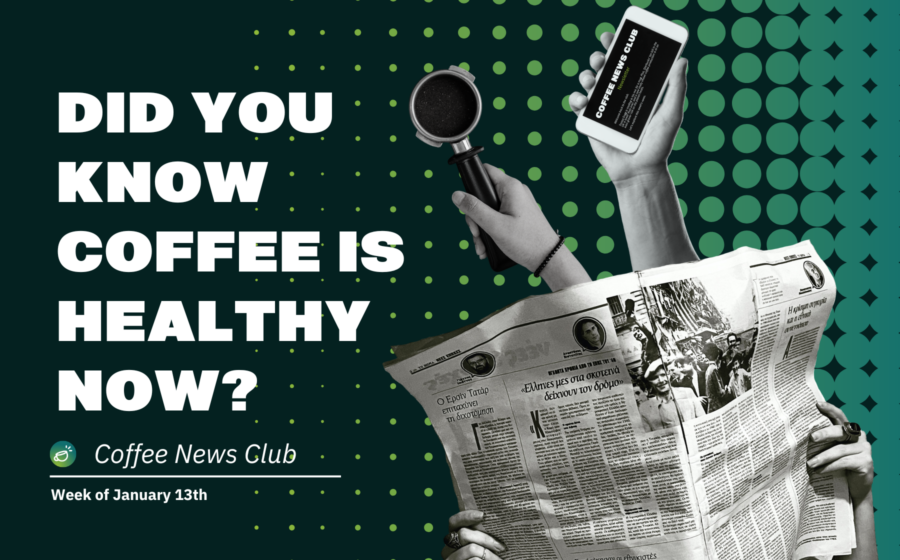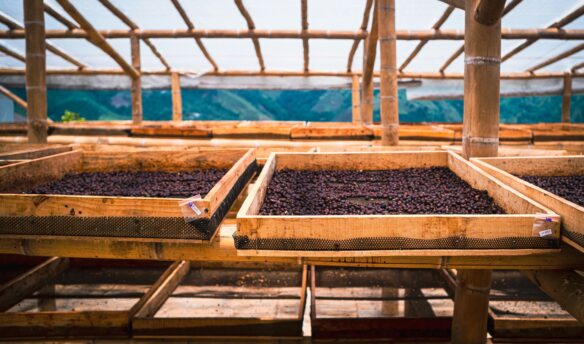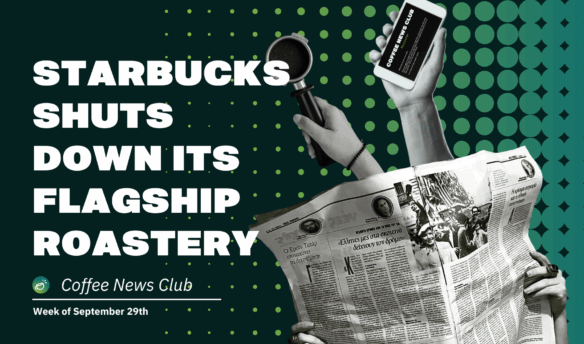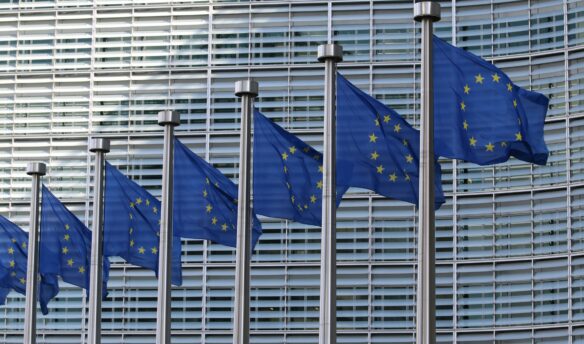I’d like a venti cortado, please. Plus, the FDA says coffee is healthy, but what does that mean? According to a new study, it depends on what time of day you decide to caffeinate.
‘FDA Says Coffee with Less Than Five Calories Can Be Called ‘Healthy” – via Daily Coffee News
We discuss coffee’s health benefits in this newsletter nearly every week—we even have a separate section dedicated to new studies and insights that answer the ever-burning question: ‘Is coffee good for you?’
Generally speaking, most studies agree that coffee is good for you. Whether or not that’s actually true, coffee companies haven’t been legally able to market their products as healthy—until now.
Coffee beverages can officially be labeled as “healthy,” according to the United States Food and Drug Administration (FDA), so long as they contain less than five calories per 12 oz serving.
Due to take effect at the end of February, the updated rule is part of the FDA’s attempt to better define how the term “healthy” can be used on food and beverage labels. According to Daily Coffee News, the rule change is “designed to dovetail with the latest Dietary Guidelines for Americans, as issued every five years.”
To label a product healthy, the FDA wrote in a notice about the revised rule, “suggests that a food, because of its nutrient content, may help consumers maintain healthy dietary practices.”
Both the National Coffee Association and the American Heart Association wrote letters of support to update the rule. And the revised guidelines don’t just include coffee: water and tea beverages also count—even those with added ingredients such as flavors or low/no calorie sweeteners—so long as they contain less than five calories per serving.
“Decades of robust, independent scientific evidence show that coffee drinkers live longer, healthier, happier lives, and [the] FDA is absolutely right that including coffee in the definition of ‘healthy’ can help consumers choose beverages that help maintain healthy diets,” NCA CEO William “Bill” Murray said in a statement.
In a post on LinkedIn, however, Murray was more cautious, noting that there are still questions about what the announcement means for coffee companies. “We strongly suggest that you do not rush to put ‘healthy’ on your coffee products until we have further information,” he wrote.
‘Coffee Board of India to Introduce New National Certifications for Producers’ – via World Coffee Portal
The margins on coffee growing are slim, and many producers don’t make enough to cover the cost required to produce coffee, let alone make a sustainable profit. One way farmers can make more money is through certifications—think organic or Fair Trade-certified—which can boost coffee producers’ market opportunities and prices. However, they are not a magic bullet: the cost of getting organic or Fair Trade certified can be high and is often out of reach for many farmers.
According to the Coffee Board of India, most coffee grown in India is not certified due to the high cost of obtaining accreditation. At the same time, over 80% of the country’s exports are sold at commodity prices, the lowest price farmers can get for their coffee. Despite home-grown brands such as Blue Tokai Coffee Roasters spotlighting local single-farm and specialty coffee, many coffee producers in India are making very little money on their coffee.
To help farmers earn more, the Coffee Board of India is introducing new national standards and certification processes, which will be offered to Indian producers at no cost.
“The Coffee Board of India said implementation modules for the new certification processes will be completed by June 2025, after which consultations will be held with stakeholders to assess whether the procedures are feasible,” World Coffee Portal reports.
“Until now, most coffee varieties have been certified under international standards, which group all types of coffee together under the same conditions,” said Coffee Board of India CEO KG Jagadeesha. “However, Indian coffee is grown in special conditions. This certification process will recognise and highlight these unique growing conditions, helping Indian coffee stand out and gain its own global recognition.”
‘Starbucks Just Introduced An 8-Ounce Cortado’ – via Sprudge
When you hear the word “cortado,” what do you picture? If you’re a coffee person, you probably envision a small drink, usually an espresso-based beverage traditionally made with a 1:1 ratio of coffee to milk and often served in glass versus ceramic.
The cortado has been around for a while: in 2010, the New York Times writer Oliver Strand described the then-relatively unknown drink as “about four ounces total — a little less than two ounces of espresso topped with a little more than two ounces of steamed milk — which makes it strong but small, easy to drink quickly and milky enough to seem indulgent.”
If you have ever worked as a barista, you have probably struggled with customers who order a macchiato but want the giant Starbucks version, which is basically just a latte, rather than the traditional espresso topped with a tiny amount of foam. If you are currently a barista, get ready to do it all over again, because Starbucks just launched their version of a cortado, which is about double the size of the drink Strand described fifteen years ago.
Cortados being added to the menu is part of new CEO Brian Niccol’s multi-step campaign to make Starbucks “a welcoming coffeehouse” again. Niccol has already introduced many new techniques to make the struggling chain more inviting, including offering more comfortable seating, eliminating many of the brand’s famed discounts, and cutting back on the company’s expansive and overly complex menu.
However, the menu still has room for a cortado—or at least, at nearly double the size of what most coffee shops serve, its own version of a cortado. Nation’s Restaurant News reports that the cortado is the first addition to the company’s “core espresso beverage lineup” since the flat white in 2015 (available in various sizes up to 20 oz).
Many baristas have already dealt with the Starbucks versus traditional macchiato argument, and the brand’s new cortado is likely to usher in a new era of confused customers and frustrated baristas. As Zac Cadwalader in Sprudge sums up:
It’s all just too much. Put a cortado on your menu, fine, but actually make it a cortado. Or put an eight-ounce espresso and milk drink on there and come up a new name for it (though latte would work just fine). A pianissimo maybe or even an octado. It could literally be anything, save for the five or 10 words already used to connote a very specific espresso beverage.
More News
‘This Tiny Robot Cat will Blow on Your Coffee to Cool It Off’ – via TechCrunch
‘State Offers Funds to Battle Coffee Pests’ – via Hawaii Tribune Herald
‘Sicilian Coffee Roaster Zicaffe Tries to Block Zara’s New Zacaffe Coffee Shops’ – via Reuters
‘US Caffeine Survey: Coffee Up, Tea Down – And a New Contender Emerges’ – via Beverage Daily
‘Charge $7 For a Coffee? Some Stressed-out Cafe Owners Would Rather Shut Down’ – via The Age
‘Starbucks Has a Pumpkin Spice Latte Problem in China’ – via New York Times
‘The Barista League Coming to Six Global Regions in 2025’ – via Daily Coffee News
Is Coffee Good For You?
Coffee can help you live longer—but only if you drink it in the morning.
New research from Tulane University found that people who drank coffee in the morning had a lower risk of dying from cardiovascular disease and had lower overall mortality risk compared to non-drinkers. All-day drinkers, meanwhile, saw no such risk reduction.
The study, published in the European Heart Journal, examined dietary and health data from over 40,000 US adults who took part in the National Health and Nutrition Examination Survey between 1999 and 2018. Those who drank coffee in the morning—from four a.m. to noon—had a 16% lower chance of dying from any cause and a 31% lower chance of dying from cardiovascular disease compared to non-coffee drinkers.
The amount consumed didn’t make a huge difference, with heavier coffee drinkers receiving the best results but those who only have one cup in the morning still seeing some benefit.
The same cannot be said for all-day coffee drinkers: Those who kept drinking coffee into the afternoon and evening showed no decrease in risk.
“This is the first study testing coffee drinking timing patterns and health outcomes. Our findings indicate that it’s not just whether you drink coffee or how much you drink, but the time of day when you drink coffee that’s important,” said lead author Dr. Lu Qi from Tulane University in a press release.
However, researchers still have more questions. “This study doesn’t tell us why drinking coffee in the morning reduces the risk of death from cardiovascular disease,” Qi said. “A possible explanation is that consuming coffee in the afternoon or evening may disrupt circadian rhythms and levels of hormones such as melatonin.”
Like most dietary survey-based research, the study had limitations in that it was based on self-reported data and focused on US participants. “Further studies are needed to validate our findings in other populations, and we need clinical trials to test the potential impact of changing the time of day when people drink coffee,” Qi said.
















